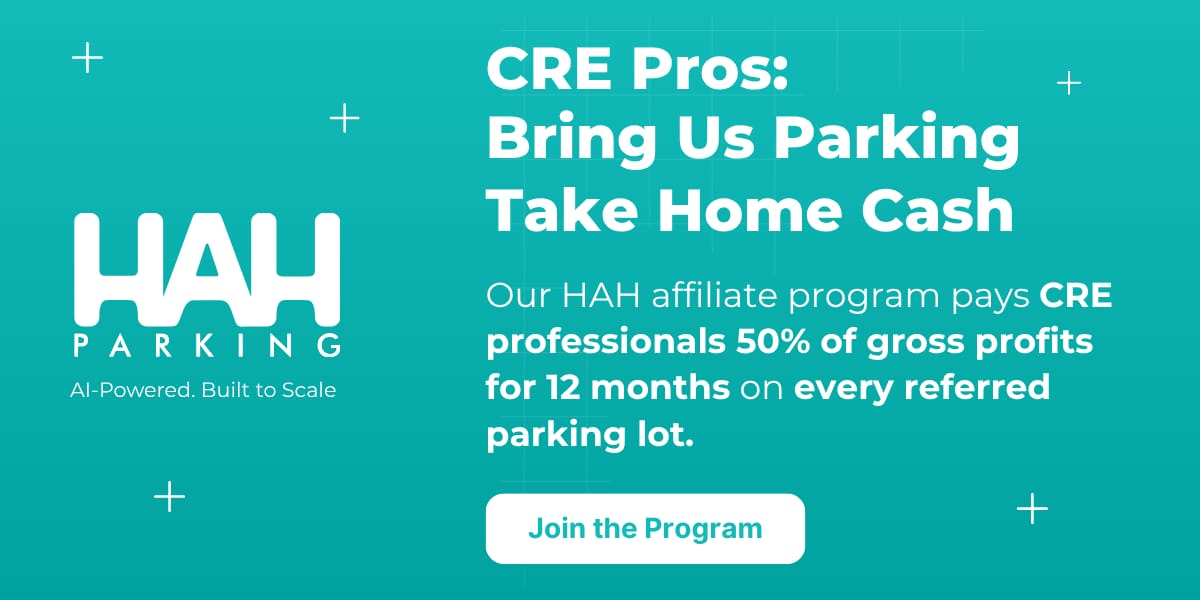- CRE Daily
- Posts
- Multifamily Cap Rates Reveal Deep Divide Across U.S. Markets
Multifamily Cap Rates Reveal Deep Divide Across U.S. Markets
$41B in trades, 929 deals, and a clear divide in cap rate expectations.
Good morning. Multifamily investors are navigating a wide cap rate spread across the top 30 U.S. markets. From low-yield coastal strongholds to higher-return Sun Belt metros, the latest data reveals where capital is flowing — and why.
Today’s issue is brought to you by InvestNext—master the framework to close more investors.
Market Snapshot
|
| ||||
|
|
Rate Spread
Multifamily Cap Rates Reveal Deep Divide Across U.S. Markets
Multifamily buyers are seeing wildly different return expectations depending on the metro—ranging from slow and steady in San Francisco to faster payback periods in Florida.
A gap in caps: There's a 200+ basis point spread in cap rates across the 30 busiest U.S. multifamily markets, reflecting wide-ranging risk-return profiles. San Francisco Peninsula’s low 3.88% rate signals stability but a 26-year payback, while Fort Lauderdale’s 6.27% offers faster returns in about 16 years.

Understanding the math: Cap rates—NOI divided by sale price—are simple in formula but reveal complex market dynamics. Lower rates signal strong performance and competition; higher rates imply more risk. As of September 2025, the national average was 5.04% across $41B in sales from 929 deals.
Cap rates stabilizing: After bottoming out at 4.1% in 2021, cap rates rose to 5.2% by 2023 and remained largely flat in 2024. Early 2025 saw a slight dip, and CBRE's August cap rate survey suggests most investors expect rates to stay steady through year-end—with more anticipating decreases than increases.
Volume vs. value: Phoenix led all markets with $3.3B in sales through September, while San Francisco’s Peninsula remained the priciest, driven by its affluent, tech-heavy tenant base. Meanwhile, Sun Belt markets like Fort Lauderdale offer higher yields, but with greater perceived risk.
Who's buying and selling? Private buyers led in 2025, while REITs quietly doubled their share to 6%. Distressed sales are rare, as most properties are hitting the market due to loan maturities, stabilization needs, or strategic moves, not panic.
➥ THE TAKEAWAY
New rules of return: Multifamily investors face a split market: low-cap-rate areas demand patience, while high-yield markets promise faster returns—but with added risk. The cap rate spread reflects a cautious, opportunistic investor base still searching for post-pandemic balance.
TOGETHER WITH INVESTNEXT
Is your current investor base tapped out?
Do you need MORE qualified investors to meet your fundraising goals for 2025?
If you want to build a strategic marketing plan that goes beyond just getting eyes on your deals, you don't want to miss this webinar.
Learn the Connect, Commit, Close framework and close new, qualified investors faster.
*This is a paid advertisement. Please see the full disclosure at the bottom of the newsletter.
✍️ Editor’s Picks
Capital solutions: Dolfin’s tenant improvement lease model delivers flexible capital and long-term value for tenants and landlords nationwide. (sponsored)
Timber titans: Rayonier and PotlatchDeltic are merging in a $7.1B all-stock deal, forming the second-largest U.S. timberland owner.
Easing ahead: The Fed may soon end its balance sheet runoff, with Powell hinting at future rate cuts amid labor market weakness and tightening liquidity.
Hidden exposure: CRE faces rising risks as private credit cracks emerge after First Brands and Tricolor bankruptcies.
Split strategies: Wells Fargo cut office loan exposure by 33% over two years, while JPMorgan saw modest growth as loan quality improved.
Library landlock: A Florida judge has temporarily blocked Miami Dade College from transferring prime downtown land for Donald Trump's presidential library.
Greco implodes: Brooklyn developer Louis Greco filed for personal bankruptcy amid mounting lawsuits, foreclosures, and over $100M in debts.
🏘️ MULTIFAMILY
Build times: Apartment construction sped up slightly in 2024, with average build times dropping to 19.6 months despite labor shortages.
Corner turned: The multifamily market is regaining momentum as interest rate cuts, easing supply pressures, and new federal tax incentives revive investor confidence and deal activity.
Potential merger: FPI is laying off 105 employees amid strong signs of an unconfirmed merger with Asset Living.
Fraud fallout: A $100M investor scam has sparked a wave of foreclosures in Baltimore, hitting lenders and renters hard.
Map the gap: Florida faces a 120K-unit housing shortage, with a new interactive map highlighting shortages in major metros like Miami and Tampa.
🏭 Industrial
Power pivot: "Powered land" is emerging as a hot real estate asset as data center growth shifts focus from space to power access.
Rate rebound: After three years of declines, self-storage rents ticked up 0.9% YoY in September 2025, hinting at a possible market rebound led by REITs.
Data deal: A BlackRock-led consortium is acquiring Aligned Data Centers in a $40B deal, marking the first investment for its AI Infrastructure Partnership (AIP).
Factory funded: Acumen landed a $125M refi for its Brooklyn flex space, a former Pfizer site now 88% leased to diverse tenants.
Logistics launch: Stream Realty has entered the Nashville market with a 1.1M SF speculative industrial project in Lebanon.
GLIDE path: Blackstone and Abu Dhabi’s Lunate have launched a $5B joint venture to develop and acquire Class A logistics assets across the fast-growing GCC region.
🏬 RETAIL
Center snag: Federal Realty acquired Annapolis Town Center for $187M, expanding its high-income, open-air retail footprint near D.C. and Baltimore.
Deal divided: Spirit Properties sold a Santa Clarita retail center in separate deals to boost returns, landing $33.75M from a REIT and a 1031 exchange buyer.
Family empire: O’Connor Capital has grown from a family firm into a $30B+ global retail developer and $6.5B CRE private equity powerhouse.
🏢 OFFICE
Deals heat up: Miami’s office leasing is set to surpass 2024 levels after a strong Q3, but rent growth is slowing as top-tier space tightens.
Core expansion: CoreWeave expanded its D.C. office by 79% at 1001 Pennsylvania Ave. NW, as booming AI contracts fuel its rapid growth.
Skyline statement: Prada is in talks with Related to develop a luxury skyscraper on Fifth Avenue featuring retail, office space, and high-end residences priced over $10K/SF.
Tower trouble: The owner of Houston’s historic 800 Bell St. skyscraper filed for bankruptcy to block foreclosure after failed residential conversion plans and rising lender disputes.
Derby debut: With $1.8B from major backers, Derby Lane Partners is entering CRE lending with $5B to deploy, targeting office conversions and opportunistic deals.
Write-down: The value of RXR’s 1211 Sixth Ave has plunged 42% since 2015 to $1.19B, triggering a loan modification and $1.45B recap.
🏨 HOSPITALITY
Market momentum: Hotel brands see growth ahead as construction costs dip and demand rises near data centers and in tax-friendly states.
Bets off: MGM dropped its $2.3B bid for a NYC casino, citing lower returns and a shorter 15-year license term.
Luxury rebound: Two luxury Manhattan hotels sold for $425M, marking a rebound as occupancy nears pre-pandemic highs.
A MESSAGE FROM HAH PARKING
Your Next Income Stream Is From A Parking Lot.
HAH Parking is the all-in-one parking management platform that helps lot owners earn more without meters, gates, or heavy infrastructure.
Our cloud-based system increases revenue, improves efficiency, and requires no upfront costs or long-term contracts.
As part of the HAH Affiliate Program, CRE professionals earn 50% of gross profits for 12 months on every lot they refer. Owners see higher returns. You unlock recurring income.
Apply today to secure your spot.
*This is a paid advertisement. Please see the full disclosure at the bottom of the newsletter.
📈 CHART OF THE DAY

Hispanics now comprise 32% of the U.S. construction workforce, up from 24% in 2010.

You currently have 0 referrals, only 1 away from receiving Multifamily Stress Test Model.
What did you think of today's newsletter? |




Reply